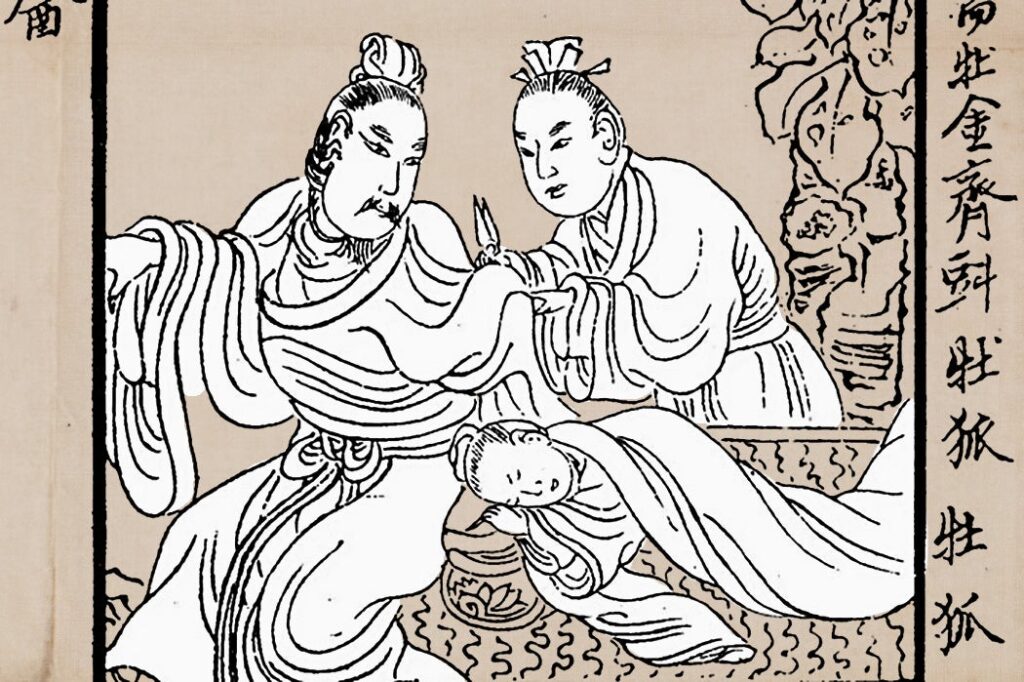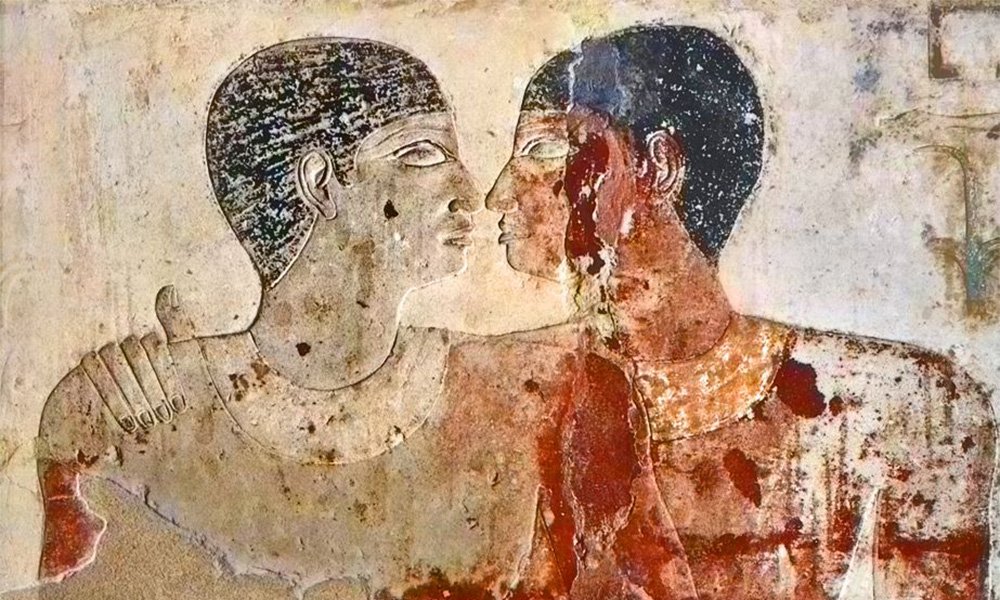The History and Culture of Homosexuality Around the World

Table of Contents
Ancient References to Same-Sex Relationships

Same-sex relationships have been documented throughout history, with references found in ancient texts and artifacts. For example, in ancient Greece, same-sex relationships were commonly depicted and accepted. The Greeks had a specific term, “erastes” and “eromenos,” to denote the roles of the older and younger partners in these relationships.
In ancient Rome, there is evidence of same-sex relationships among emperors, politicians, and even religious figures. One such example is the Emperor Hadrian, who had a well-known romantic and sexual relationship with Antinous, a young man who was deified after his death. These relationships were not only acknowledged but sometimes even celebrated within the Roman culture.
Historical Perspectives on Homosexuality

Homosexuality is a topic that has been present throughout history, and it is important to explore the historical perspectives surrounding it. By examining ancient references, cultural attitudes, and the treatment of homosexuality in various civilizations, we can gain a better understanding of how it has been perceived and accepted over time.
One fascinating aspect of historical perspectives on homosexuality is the presence of references in ancient texts and literature. For example, in ancient Greece, same-sex relationships were not only acknowledged but also celebrated. Famous philosopher Plato, in his work “Symposium,” discusses the concept of love, including the love between individuals of the same gender. This acceptance of homosexuality is further highlighted in the works of other Greek writers such as Sappho, who wrote passionately about her love for women. Similarly, ancient Indian texts like the Kama Sutra contain explicit descriptions of same-sex relationships, reflecting a tolerance for diverse sexual orientations.
Moving beyond ancient times, cultural attitudes towards homosexuality have varied throughout history and across different civilizations. In some cases, it has been accepted and even celebrated, while in others, it has been stigmatized and condemned. It is important to note that historical perspectives on homosexuality were not uniform, and they were deeply influenced by factors such as religion, societal norms, and political climates. Exploring the diversity of these perspectives allows us to appreciate the complexity of human experiences and challenges our own preconceived notions about sexuality and identity.
Early Cultural Attitudes Towards Homosexuality

Early cultural attitudes towards homosexuality vary across different societies and time periods. It is important to note that our understanding of these attitudes is limited due to the scarcity of written records and the bias of historical documentation. However, we can explore some examples that shed light on how homosexuality was perceived in early cultures.
In ancient Greece, for instance, same-sex relationships were not uncommon and were even celebrated in some communities. The concept of pederasty, a relationship between an adult man and an adolescent boy, was seen as a mentorship and an avenue for character development. While this may seem controversial by today’s standards, it is essential to consider the cultural context in which these relationships occurred. Similarly, in ancient Rome, same-sex relationships were accepted among some social classes, particularly in the military. Again, the perception and acceptance of homosexuality in these societies were influenced by various factors, including religion, social norms, and power dynamics.
Moving beyond ancient Greece and Rome, it is crucial to examine other cultures as well. For example, in ancient China, homosexuality was acknowledged and accepted in some periods while being condemned in others. The Tang Dynasty (618-907 CE) is known for its flourishing homosexual culture, evident in literature and art. However, during the Ming and Qing dynasties, homosexuality was increasingly stigmatized, and laws were introduced to restrict same-sex relationships.
These examples illustrate the diversity of cultural attitudes towards homosexuality throughout history. Understanding the various historical perspectives lays the groundwork for a comprehensive examination of this topic, leading to a deeper appreciation of the complex nature of human sexuality.
Homosexuality in Ancient Civilizations
In exploring the historical perspectives on homosexuality, it is essential to delve into ancient civilizations. These early cultures provide us with valuable insights into the diverse attitudes towards same-sex relationships throughout history.
One of the most well-known examples of homosexuality in ancient civilizations is ancient Greece. In Greek society, same-sex relationships were not only accepted but often celebrated. The most notable example is the bond between male warrior lovers, known as the “erastes” and “eromenos.” These relationships were regarded as highly noble and based on mentorship and emotional connection.
Another intriguing example comes from ancient Rome. While Roman society was more conservative in its view of same-sex relationships, homosexuality was still prevalent among certain segments of the population. Emperor Nero, for instance, is famously known for his relationships with both men and women. This demonstrates the existence of diverse attitudes towards same-sex relationships, even within the same ancient civilization.
By examining the historical context and cultural attitudes towards homosexuality in ancient civilizations, we can gain a deeper understanding of its prevalence and acceptance throughout history. This exploration serves as a reminder that societal perspectives on sexuality have varied greatly across different times and cultures. Stay tuned as we further explore the colorful tapestry that is the history of homosexuality.
This table summarizes the presence and attitudes towards homosexuality in ancient civilizations:
| Civilization | Presence of Homosexuality | Attitudes and Practices |
|---|---|---|
| Ancient Greece | Homosexuality was prevalent and accepted in various forms. | Homosexuality was commonly practiced among men, particularly in the context of pederasty, where older men (erastai) mentored and engaged in sexual relationships with younger boys (eromenoi). Relationships between adult men (erastes) and youths (eromenos) were seen as a means of education, social bonding, and aesthetic appreciation. Same-sex relationships were celebrated in literature, art, and philosophy, with notable examples including the works of Plato, Sappho, and the practice of symposiums. While same-sex relationships were socially acceptable, they were subject to certain cultural norms and expectations, and the roles of dominance and submission were often emphasized. |
| Ancient Rome | Homosexuality existed but was subject to cultural norms and regulations. | Homosexuality was practiced among both men and women, but societal attitudes varied over time and depended on factors such as social status and citizenship. In the early Roman Republic, same-sex relationships were less regulated and more accepted, with examples of prominent figures engaging in homosexual relationships. However, as Roman society became more conservative and patriarchal, attitudes towards homosexuality shifted, and laws were enacted to regulate sexual behavior. While same-sex relationships were not explicitly criminalized, certain acts (such as male prostitution and sexual activity with slaves) were subject to legal penalties. Despite legal and social restrictions, homosexual relationships continued to exist in various forms, albeit with varying degrees of acceptance and visibility. |
| Ancient Egypt | Evidence of homosexuality exists but is limited. | Homosexuality was not widely documented in ancient Egyptian society, and attitudes towards same-sex relationships are not well understood. While there is evidence of homoeroticism in art and literature, such as depictions of same-sex couples embracing or engaging in intimate gestures, the extent to which homosexuality was practiced and accepted remains unclear. Some scholars suggest that same-sex relationships may have existed within certain social contexts, such as religious or royal circles, but concrete evidence is lacking. Without comprehensive historical records or legal codes addressing homosexuality, it is challenging to ascertain the attitudes and practices towards homosexuality in ancient Egypt with certainty. |
| Ancient Mesopotamia | Homosexuality was present but not widely documented. | Homosexuality was not extensively documented in ancient Mesopotamian texts or artifacts, making it difficult to assess its prevalence or societal attitudes. While there are references to same-sex relationships and homoerotic themes in mythological texts and literature, such as the Epic of Gilgamesh, these depictions are often symbolic or allegorical in nature. Some scholars suggest that homosexuality may have been tolerated or accepted in certain contexts, such as religious rituals or palace life, but concrete evidence is lacking. Without comprehensive historical records or legal codes addressing homosexuality, our understanding of its presence and acceptance in ancient Mesopotamian society remains speculative. |
| Ancient China | Homosexuality existed but was subject to societal norms and expectations. | Homosexuality was known and practiced in ancient Chinese society, although attitudes towards same-sex relationships were influenced by Confucian moral principles and hierarchical social norms. While male same-sex relationships were not explicitly prohibited, they were often viewed unfavorably in Confucian ideology, which emphasized family and filial piety. Homosexual behavior was subject to certain cultural taboos and expectations, and relationships between men were expected to adhere to hierarchical roles and obligations. Despite these constraints, same-sex relationships were depicted in literature, art, and historical records, indicating their presence and significance within ancient Chinese culture. |
Homosexuality in Medieval Times
During the medieval times, attitudes towards homosexuality varied widely across different cultures and regions. While it is important to note that the understanding and perception of homosexuality as a distinct sexual orientation did not exist in the same way as it does today, there is evidence to suggest that same-sex relationships and sexual behaviors were present in medieval societies.
In some regions, such as parts of Europe, same-sex acts were often seen as sinful and morally reprehensible. The influence of the Christian Church played a significant role in shaping these attitudes, with religious texts and teachings condemning homosexuality. As a result, individuals found guilty of engaging in same-sex relationships could face severe punishments, including public humiliation, fines, imprisonment, or even death. These harsh penalties were meant to reinforce societal norms and discourage any deviations from the expected heterosexual relationships and gender roles. However, it is important to note that not all regions enforced such strict laws, and there were instances where same-sex relationships were tolerated to varying degrees depending on the specific social and cultural context.
It is essential to approach the topic of homosexuality in medieval times with sensitivity and an understanding that attitudes and beliefs have evolved over time. By examining historical records and scholarly research, we can gain insights into the realities and complexities of same-sex relationships in the medieval period.
Homosexuality in Renaissance Art and Literature
In the vibrant period of the Renaissance, artistic and literary works often explored a wide range of subjects, including same-sex relationships. During this time, depictions of homosexuality in art and literature were not uncommon, providing intriguing insights into the societal attitudes and cultural perceptions of the era.
In Renaissance art, the representation of same-sex relationships primarily focused on male pairings rather than female relationships. Paintings and sculptures showcased intimate moments between men, conveying various themes such as love, friendship, and companionship. Artists, such as Michelangelo and Leonardo da Vinci, subtly included homoerotic elements in their works, blurring the line between male friendships and romantic relationships.
Similarly, in Renaissance literature, there emerged a notable presence of homoerotic themes. Several renowned writers, such as William Shakespeare and Christopher Marlowe, explored same-sex desires in their plays and sonnets. These works explored the complexities of human relationships, love, and desire, while also reflecting the social and cultural context of the time.
Overall, the exploration of homosexuality in Renaissance art and literature offers a fascinating glimpse into the understanding and acceptance of same-sex relationships during this period. Examining these creative expressions allows us to gain a deeper appreciation of the complexities of human sexuality and the evolving attitudes towards homosexuality throughout history.
Homosexuality in Eastern Cultures
Homosexuality in Eastern Cultures has a rich and complex history, often intertwined with various religious, societal, and cultural beliefs. While it is essential to approach this topic with cultural sensitivity and avoid generalizations, exploring the historical perspectives can provide valuable insights into the diverse attitudes and practices surrounding same-sex relationships in Eastern societies.
In some Eastern cultures, historical records and texts indicate a level of acceptance and even reverence towards same-sex relationships. For example, in ancient China, there is evidence of same-sex love being celebrated in poetry and literature, such as the famous Tang dynasty collection of poems, the “Book of Songs.” Similarly, Japanese art and literature, such as “The Tale of Genji,” depict same-sex relationships with sensitivity and acceptance. These cultural references suggest that same-sex love was not entirely taboo and was sometimes even regarded as a higher form of spiritual and emotional connection.
However, it is crucial to note that not all Eastern cultures have had the same level of acceptance towards homosexuality. In some societies, the dominant religious or cultural beliefs have led to attitudes that view same-sex relationships as taboo or sinful. This is particularly evident in the influence of conservative interpretations of religious texts in certain countries. It is important to acknowledge that these societal attitudes can vary widely within different Eastern cultures, and that there are ongoing discussions and debates surrounding LGBTQ+ rights and acceptance in these societies today.
As we delve deeper into the historical and cultural contexts of homosexuality in Eastern cultures, it is important to remember the diversity of experiences and perspectives within these societies. Understanding the complexity of this topic requires us to approach it with an open mind, respecting cultural differences while advocating for inclusivity and human rights for all individuals, regardless of their sexual orientation or gender identity. Through empathy, education, and open dialogue, we can continue to foster acceptance and understanding in our increasingly interconnected global society.
Homosexuality in African Societies
African societies have a rich and diverse history when it comes to their attitudes and perspectives on homosexuality. While it is important to approach this topic with cultural sensitivity, it is also crucial to shed light on the different experiences and perceptions that exist within the continent.
In many African societies, same-sex relationships and non-conforming gender identities have been documented throughout history. For instance, in ancient Egypt, homosexuality was not only tolerated but also documented in art and literature. The tomb of Niankhkhnum and Khnumhotep, dating back to around 2400 BCE, portrays them in an intimate embrace, suggesting a same-sex relationship. Similarly, the Dogon people of Mali have a long-standing tradition of accepting and celebrating homosexuality, where they believe it is a necessary balance in society. These examples show that there is a rich tapestry of experiences and perspectives on homosexuality within African societies.
Homosexuality in Indigenous Cultures
Indigenous cultures around the world have diverse views and understandings of human sexuality, including homosexuality. These cultures have often celebrated and recognized the presence of same-sex relationships and gender diversity within their communities. For example, among the Native American Two-Spirit tradition, individuals who embody both masculine and feminine qualities are considered to possess special spiritual and healing powers.
In many indigenous cultures, the acceptance of same-sex relationships was based on a holistic understanding of sexuality as a natural and essential part of human existence. Instead of relying on binary concepts of gender and sexuality, these cultures recognized the fluidity and variability of human sexual experiences. By respecting and honoring individuals who did not conform to traditional gender norms, indigenous communities fostered an environment of inclusivity and respect for diversity.
In order to better understand the historical perspectives and lived experiences of LGBTQ+ individuals within indigenous cultures, it is important to engage with and learn from diverse voices and perspectives. By doing so, we can gain a deeper appreciation for the cultural richness and diversity of human sexuality and challenge the heteronormative assumptions that have often marginalized and erased non-heterosexual identities throughout history.
Homosexuality in Colonial Times
During colonial times, attitudes towards homosexuality varied across different regions and cultures. In some colonial societies, same-sex relationships were acknowledged and even celebrated to some extent, while in others, they were strictly condemned and punished. The concept of homosexuality as a distinct identity was not widely recognized during this period, and the understanding of same-sex relationships was often shaped by prevailing religious and moral beliefs.
In North America, for example, the Puritan settlers viewed homosexuality as a sinful and immoral behavior, in line with their strict Christian values. Laws against sodomy were established, and those found guilty could face severe punishments, including public humiliation, imprisonment, or even death. Similar attitudes were observed in other European colonies, such as those in the Caribbean and South Asia, where homosexuality was deemed incompatible with the prevailing religious and moral codes.
Homophobia and Persecution Throughout History
Throughout history, there have been instances of homophobia and the persecution of individuals based on their sexual orientation. These acts of discrimination and violence have caused immense harm and suffering to the LGBTQ+ community. From ancient civilizations to modern times, homophobia has been deeply ingrained in societies worldwide, leading to severe consequences for those who identify as gay, lesbian, bisexual, or transgender.
In many cases, religious and cultural beliefs have played a significant role in enforcing discriminatory attitudes towards homosexuality. For instance, in some ancient civilizations, same-sex relationships were viewed negatively due to religious texts that condemned such behavior. In medieval times, the dominant Christian ideology shaped societal perspectives, often leading to the persecution and punishment of individuals who engaged in same-sex relationships.
It is vital to study and understand the historical context of homophobia to work towards a more inclusive and accepting society. By examining the underlying reasons for these discriminatory attitudes and recognizing the harm they have caused, we can strive for a better future where all individuals are treated with dignity and respect, regardless of their sexual orientation.
The Emergence of LGBTQ+ Movements
The emergence of LGBTQ+ movements marks a significant turning point in the history of human rights and social progress. These movements have played a pivotal role in advocating for the rights and recognition of lesbian, gay, bisexual, transgender, and queer individuals, as well as other marginalized gender and sexual identities. In the face of societal discrimination and prejudice, LGBTQ+ activists have fought tirelessly to challenge social norms, demand equality, and create safe spaces where individuals can express their authentic selves.
One of the earliest and most influential LGBTQ+ movements is the modern gay rights movement, which gained momentum in the aftermath of the Stonewall Riots in 1969. The riots, sparked by a police raid on the Stonewall Inn, a gay bar in New York City, became a catalyst for a wave of activism and a call to action for LGBTQ+ individuals to assert their rights and demand societal change. This seminal event paved the way for the establishment of organizations such as the Gay Liberation Front and the formation of pride parades, which have since become symbolic celebrations of LGBTQ+ visibility and resilience.
The LGBTQ+ movements have made significant strides over the years, achieving legal victories, fostering greater societal acceptance, and spearheading important conversations on gender and sexual diversity. However, it is crucial to recognize that challenges persist, and the struggle for full equality is far from over. As we delve deeper into the historical milestones and contemporary perspectives on LGBTQ+ rights, it becomes apparent that these movements have shaped the course of history and continue to inspire change across the globe.
Milestones in LGBTQ+ Rights Around the World
From the landmark Stonewall riots in 1969 to the decriminalization of homosexuality in various countries, the LGBTQ+ rights movement has achieved significant milestones around the world. One major milestone was the removal of homosexuality from the list of mental disorders by the World Health Organization in 1990, recognizing that being gay or lesbian is not a pathology but a normal variation of human sexuality. This decision had a profound impact on dismantling the stigma and discrimination faced by LGBTQ+ individuals and paved the way for further progress in securing their rights.
Another important milestone was the legalization of same-sex marriage in several countries, starting with the Netherlands in 2001. Today, over 30 countries have recognized marriage equality, granting LGBTQ+ couples the same legal rights and protections as their heterosexual counterparts. This achievement represents a significant step towards equality and societal acceptance, and it has provided many LGBTQ+ individuals with the opportunity to publicly declare their love, commitment, and desire for a life-long partnership, just like any other couple.
While these milestones represent significant progress, there is still much work to be done in ensuring full equality and protection for LGBTQ+ individuals globally. LGBTQ+ rights continue to be a contentious issue in many parts of the world, with some countries imposing harsh legal penalties and fostering a climate of homophobia and discrimination. It is essential to continue fighting for LGBTQ+ rights, using evidence-based approaches, advocating for policy changes, and promoting education and understanding to achieve a more inclusive and accepting society for all.
Contemporary Perspectives on Homosexuality
Contemporary Perspectives on Homosexuality
In today’s modern society, attitudes towards homosexuality have significantly evolved, reflecting a more inclusive and accepting approach. This progressive shift can be attributed to various factors, including increased awareness, education, and the tireless efforts of LGBTQ+ rights movements. While discrimination and prejudice still persist, there has been a notable increase in support for LGBTQ+ individuals within communities, institutions, and even at the legislative level.
Over the past few decades, numerous countries have enacted laws to protect the rights of LGBTQ+ individuals, recognizing their equal rights to marriage, adoption, and protection against discrimination. For instance, as of 2021, same-sex marriage has been legalized in 30 countries worldwide, reinforcing the growing acceptance of diverse sexual orientations. Moreover, several countries have implemented laws and policies addressing hate crimes and bullying based on sexual orientation, striving to create safer environments for LGBTQ+ individuals.
Furthermore, the media has played a significant role in shaping contemporary perspectives on homosexuality. Television shows, movies, and literature have increasingly included LGBTQ+ characters and storylines, allowing for greater representation and fostering empathy and understanding. This increased visibility has challenged societal stereotypes and encouraged conversations about sexual orientation, helping to dismantle stigmas and foster acceptance.
However, it is vital to acknowledge that despite these positive changes, challenges persist. Homophobic attitudes and discrimination still prevail in some regions and communities, hindering full equality for LGBTQ+ individuals. It is essential for supporters of LGBTQ+ rights to continue advocating for equal rights and challenging discriminatory policies and practices.
In conclusion, contemporary perspectives on homosexuality have undergone a remarkable transformation, moving towards greater acceptance, inclusivity, and understanding. Legislative advancements, media representation, and efforts from LGBTQ+ rights movements have contributed to significant progress in dismantling stigmas and advocating for equality. While challenges remain, it is crucial to continue promoting education, empathy, and acceptance to ensure a more equal and inclusive society for all individuals, regardless of their sexual orientation.
Celebrating LGBTQ+ Culture and Diversity
One of the most important aspects of celebrating LGBTQ+ culture and diversity is recognizing the immense progress that has been made in recent years towards creating a more inclusive and accepting society. From landmark court rulings and legislation to increased representation in media and popular culture, the LGBTQ+ community has made significant strides in gaining equal rights and visibility.
However, it is vital to remember that the journey towards full equality is far from over. Despite the progress, LGBTQ+ individuals still face discrimination, prejudice, and inequality in many parts of the world. It is crucial that we continue to advocate for their rights and work towards creating a society that embraces and values all forms of love and identity. By celebrating LGBTQ+ culture and diversity, we not only honor the rich history and contributions of this community but also reaffirm our commitment to a more inclusive and equitable future for all.
What are some ancient references to same-sex relationships?
There are numerous ancient references to same-sex relationships, such as the relationships between male warriors in ancient Greece and the romantic relationships between men in ancient Rome.
How were same-sex relationships viewed in ancient civilizations?
The views on same-sex relationships varied among ancient civilizations. In some cultures, such as ancient Greece, same-sex relationships were considered a normal part of society, while in others, such as ancient Egypt, they were more taboo.
Were there any early cultural attitudes towards homosexuality?
Yes, early cultural attitudes towards homosexuality varied. Some cultures, like ancient Greece and Rome, accepted and even celebrated same-sex relationships, while others, like ancient China and India, had more complex views that evolved over time.
How was homosexuality perceived in medieval times?
In medieval times, homosexuality was generally condemned by the Christian Church and considered a sin. It was often punishable by law and seen as a moral transgression.
How did homosexuality manifest in Renaissance art and literature?
Homosexuality was subtly portrayed in Renaissance art and literature, often through coded symbols and themes. Artists and writers used allegory and mythological references to explore same-sex desire.
What were the attitudes towards homosexuality in Eastern cultures?
Attitudes towards homosexuality in Eastern cultures varied. Some cultures, like Japan, had a long history of accepting same-sex relationships, while others, like China and India, had more complex and changing views.
Were there any instances of homosexuality in African societies?
Yes, there were instances of homosexuality in African societies. However, it is important to note that Africa is a diverse continent with a wide range of cultural attitudes towards same-sex relationships that can vary significantly between different regions and ethnic groups.
How did indigenous cultures view homosexuality?
Indigenous cultures had diverse attitudes towards homosexuality, with some societies accepting same-sex relationships and even honoring LGBTQ+ individuals as spiritual leaders, while others had more restrictive views influenced by colonization.
How was homosexuality perceived during colonial times?
During colonial times, homosexuality was often condemned and seen as a deviant behavior by the colonizing powers, who imposed their own cultural and religious beliefs on the societies they colonized.
What is the history of LGBTQ+ movements?
LGBTQ+ movements emerged in the late 19th and early 20th centuries as a response to the persecution and discrimination faced by LGBTQ+ individuals. These movements fought for equal rights, decriminalization of homosexuality, and societal acceptance.
What are some milestones in LGBTQ+ rights around the world?
Milestones in LGBTQ+ rights include the decriminalization of homosexuality in various countries, the removal of homosexuality from the list of mental disorders by the World Health Organization, the legalization of same-sex marriage in several countries, and the implementation of anti-discrimination laws protecting LGBTQ+ individuals.
How is homosexuality viewed in contemporary society?
Views on homosexuality have become more progressive and accepting in many parts of the world. However, there are still regions and societies where LGBTQ+ individuals face discrimination, prejudice, and legal challenges.
How can we celebrate LGBTQ+ culture and diversity?
We can celebrate LGBTQ+ culture and diversity by promoting inclusivity, supporting LGBTQ+ rights, educating ourselves and others about LGBTQ+ history and experiences, and creating safe and affirming spaces for LGBTQ+ individuals to express themselves.






